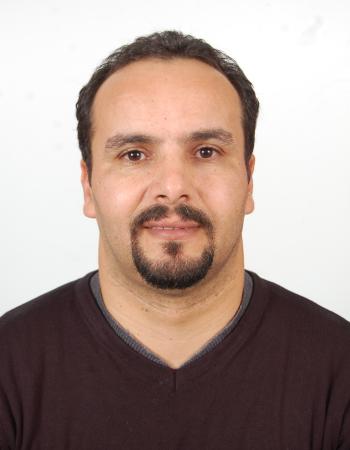Unusual Chromosomal Distribution of a Major Satellite DNA from Discoglossus pictus (Amphibia, Anura)
Amor, Nabil . 2010
A new highly abundant satellite DNA from Discoglossus pictus (Dp-sat1) was isolated and characterized. The repetitive unit (0.51 kb) has 2 HindIII sites and only one SpeI site: digestion of genomic DNA with HindIII produces 3 fragments: HA (0.17 kb), HB (0.34 kb), and HC = HA + HB (0.51 kb), while digestion with SpeI produces the whole repetitive unit (0.51 kb) that contains both HindIII sites. Sequence analysis of cloned repeats indicates an average A + T content of 71%, with many A- and T-runs. Southern blot analysis shows an arrangement of multiple bands of the 0.51 kb monomer in SpeI-digested DNA, while HindIII-digested DNA shows a ladder composed of all the possible combinations of the 3 digested fragments. Quantitative dot-blot indicates that Dp-sat1 accounts for about 6% of the D. pictus genome: this value represents about 1.5 x 10(6) copies of repetitive units per nucleus. This satellite DNA is also a major repetitive DNA in 4 other Discoglossus species, in which the repetitive unit presents the same size and restriction sites except in D. montalentii where it contains a unique HindIII site. This satellite DNA was absent in all the other tested archaeo- and neo-bratrachian species, as well as non-amphibian species. Fluorescent in situ hybridization (FISH) analysis shows that Dp-sat1 is localized only in peri- and/or para-centromeric areas of the 7 small chromosome pairs, while no labeling was observed in the 7 large chromosome pairs. Remarkably, Dp-sat1 heterochromatin is found only at one pole of the nucleus, suggesting that during interphase all 7 small chromosome pairs are located in the same nuclear region.

A high percentage of camel handlers in Saudi Arabia are seropositive for Middle East respiratory syndrome corona- virus.

A high percentage of camel handlers in Saudi Arabia are seropositive for Middle East respiratory syndrome corona- virus.

Fasciolosis is a foodborne trematodosis characterised by a worldwide distribution. Various approaches have been developed for the study of the causative agents of this parasitic infection:…

